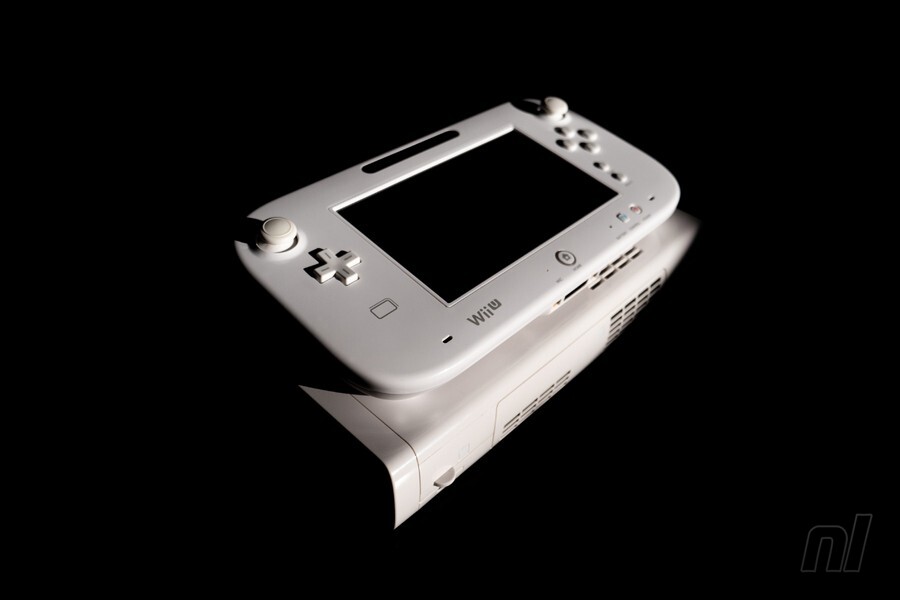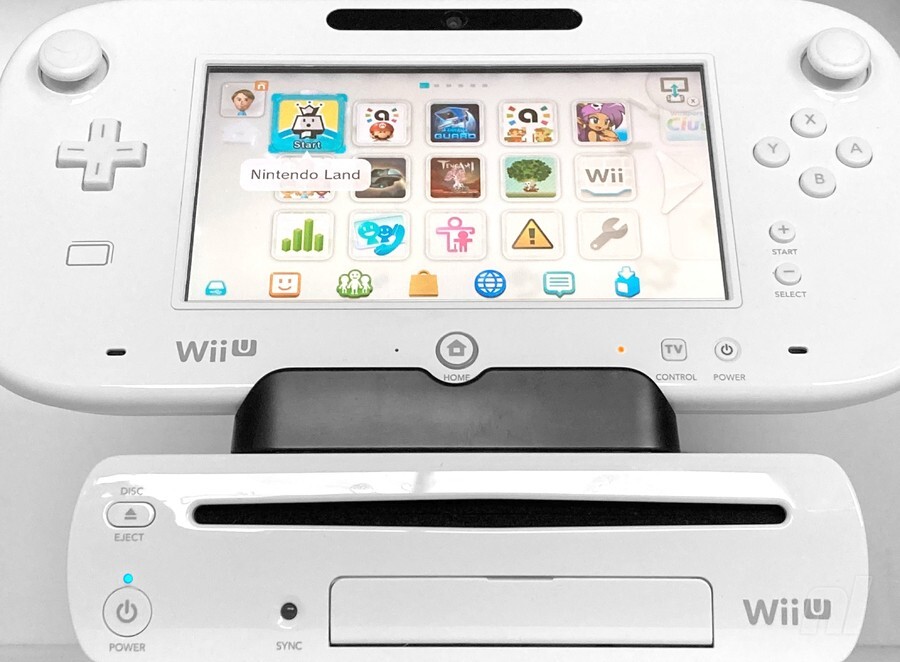[ad_1]

It is the tenth anniversary of the Wii U’s North American launch and to mark the event we invited erstwhile Nintendo Life editor and all-around totally good chap Thomas Whitehead to reminisce concerning the machine, the time he first received his fingers on it, and the recent takes he had pre-launch…
The Wii U is now 10 years outdated, which can come as a shock. It’s been off the market lengthy sufficient that it feels just like the system must be in its teenagers by now. However, as most studying these pages know, it was a sizeable business failure for Nintendo. Actually, in the event you disregard the Digital Boy, it’s Nintendo’s worst-selling ‘mainline’ console. Sure, it’s very unhappy, let’s all take a second…
After all, a few of us – together with this humble scribe – nonetheless have the charming if flawed system attached. In any case, it’s truly fairly darn cool, and it’s backwards suitable with Wii video games. But with this anniversary, I used to be requested to assume again to the launch of the system, and specifically pre-launch. At that time, I used to be Options Editor on these pages and all-in on that day-to-day Nintendo Life. And you already know what? The Wii U was – whisper it – thrilling.
When the primary query in most interviews was “erm, is it a peripheral for the Wii?”, then bother was forward
Effectively, regardless of Nintendo’s greatest efforts. I’m unsure who was finally in command of the E3 2011 reveal presentation for the system, but it surely was a miscalculation. When the primary query in most interviews that summer season was “erm, is it a peripheral for the Wii?”, then bother was forward. Some fault might be discovered with the press convention and associated movies, or with the precise model identify, and even that shiny plastic shell on the GamePad, however even years after the darn factor launched some less-focused shoppers nonetheless thought — understandably — that it was an pointless Wii add-on.
But, regardless of the portents of doom triggered by that reveal, quite a few us have been fascinated and genuinely anticipating the system. What was clear was that the identical philosophy that drove the Wii was truly behind the Wii U. The purpose of the Wii was to supply intuitive gaming to draw a ‘blue ocean’ of players. With its successor, Satoru Iwata and his crew had noticed the rise of smartphones and their affect on household items, or certainly teams of buddies. An image of 4 folks in a room all centered on separate screens was posed because the problem, with the Wii U striving to exchange that dynamic with a gaming system that made a number of screens a shared expertise for all.
Asymmetrical play was to be the substitute for movement controls, and there’s little doubt that it excited some builders early on. We have been invited to a press preview at Nintendo of Europe within the months forward of launch, and will see how the imaginative and prescient of the system was shaping up. Sure, there have been third-party ports with some optionally available GamePad play thrown in, however early-on Nintendo Land and ZombiU set the stage for a way the two-screen setup might shine.
Nintendo Land is underestimated to at the present time; at its greatest, it may be extremely enjoyable
ZombiU stays a recreation with easy however wonderful execution, and it was an early scene-setter. It was tougher to be enthused by ports of the likes of Mass Impact 3, nevertheless, because it was well-known that round a yr later ‘next-gen’ programs from Sony and Microsoft would once more put Nintendo’s system behind on energy phrases. Like all Nintendo programs, then, it will dwell or die on its idea and exclusives.
For those who actually needed to, again then, you could possibly discover causes for optimism. Past Nintendo Land and ZombiU, we nonetheless had Rayman Legends as an upcoming unique, once more incorporating a second display in some enjoyable methods. Nintendo was additionally working a second display into extra commonplace recreation experiences at that time, and additional down the road — too far to avoid wasting the system — we’d see good use of the touchscreen within the likes of Tremendous Mario Maker, and neat use of the controller in Splatoon. As a Nintendo-centric web site, we have been naturally inclined to hunt the positives pre-launch. And but, lingering considerations have been by no means distant.
We additionally went hands-on as a gaggle at Eurogamer Expo (now EGX) simply a few months earlier than launch. Once more, there was early potential and enjoyable to be discovered. Nagging suspicions and fears have been kicking in, although.
Nintendo Land is underestimated to at the present time; at its greatest, it may be extremely enjoyable. But the character of asynchronous play is that it isn’t all the time instantly intuitive and easy. Slightly than simply waggle a Distant, the controls and ideas might get surprisingly complicated, taking among the assortment’s video games past less-skilled gamers. ZombiU was wonderful, in the meantime, however not a system vendor. An amazing concept doesn’t all the time ship a killer hook, and it felt like momentum was missing.
What occurred at launch is well-known. Pricing, branding, and that essential absence of a system-selling idea or recreation doomed the Wii U to a sluggish begin. Momentum was so unhealthy after simply a few months that shops have been returning stock, and Ubisoft bailed out and made Rayman Legends multiplatform. Nintendo itself didn’t absolutely decide to the imaginative and prescient, or maybe couldn’t as a result of it lacked the easy brilliance of Wii. First-party video games arrived that principally ignored the GamePad — you, Donkey Kong Nation: Tropical Freeze — or handled it in its place management choice that nobody needed.
We’re additionally in a bizarre time, now, the place some search a redemption arc for Wii U, suggesting it walked in order that Swap might fly. That’s slightly revisionist in my opinion, although I did as soon as subscribe to that angle.
The Swap doesn’t have a lot in frequent with Wii U, with all these predecessor ports putting off any or restricted dual-screen performance from the unique. Certain, the GamePad might do ‘distant play’ to release the TV, however the vary was so continual I might barely depart the lounge earlier than the sign broke up. The Swap is principally a pill that may hook up with a TV by an HDMI dock, and with good bespoke controller rails for Pleasure-Cons; that simplicity, like with Wii, is definitely its brilliance. Conceptually it has little in frequent with the imaginative and prescient of Wii U, however slightly it was the results of Iwata-san and his crew assessing the market, realising the Swap idea might be well-liked, and discovering success.
Nintendo, notably with consoles, is commonly growth and bust. The GameCube struggled, the Wii triumphed, the Wii U then toiled, earlier than the corporate received it proper once more with Swap. The Wii U wasn’t a merging of handheld and console like Swap, it was a curio of a TV console that delivered some fascinating concepts. No matter all its issues truly promoting items, it deserves credit score and nostalgic reward for what it did usher in distinctive experiences.

Again in 2012, earlier than it hit cabinets amid ominously quiet midnight launches, most of us most likely knew – deep down – that it was by no means going to flee the shadow of the Wii. But, 10 years on, it nonetheless deserves a spot below our (and your) TV. A field of tips with Wii backwards compatibility, it will possibly nonetheless increase a smile and a cheer a decade later.
Pleased Birthday, Wii U.
[ad_2]
Source link


